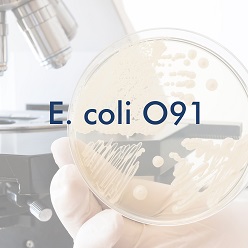There’s a reason Walmart and Costco and Kroger stopped selling raw sprouts: they suck, meaning that, like raw milk, they cause a disproportionate percentage of illness based on low consumption rates.
 The U.S. Food and Drug Administration wrote in a recent report sprouts are especially vulnerable to pathogens given the warm, moist and nutrient-rich conditions needed to grow them. From 1996 to July 2016, there were 46 reported outbreaks of foodborne illness in the U.S. linked to sprouts. The U.S. outbreaks accounted for 2,474 illnesses, 187 hospitalizations, and three deaths (and, tragically, many more in Canada, Australia, Japan and Europe).
The U.S. Food and Drug Administration wrote in a recent report sprouts are especially vulnerable to pathogens given the warm, moist and nutrient-rich conditions needed to grow them. From 1996 to July 2016, there were 46 reported outbreaks of foodborne illness in the U.S. linked to sprouts. The U.S. outbreaks accounted for 2,474 illnesses, 187 hospitalizations, and three deaths (and, tragically, many more in Canada, Australia, Japan and Europe).
A table of sprout-related outbreaks is available at https://barfblog.com/wp-content/uploads/2016/02/Sprout-associated-outbreaks-2-23-16.xlsx.
From the executive summary:
The U.S. Food and Drug Administration (FDA) set out to collect and test sprouts in 2014 as part of a new proactive and preventive approach to deploying its sampling resources with the ultimate goal of keeping contaminated food from reaching consumers.
The new approach, detailed in the Background section of this report (page 4), centers on the testing of a statistically determined number of samples of targeted foods over a relatively short period of time, 12 to18 months, to ensure a statistically valid amount of data is available for decision making. This approach helps the agency determine if there are common factors – such as origin, season, or variety – associated with pathogen findings.
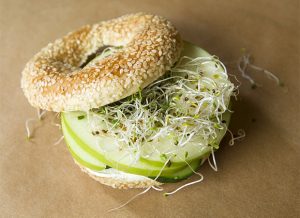 The FDA issued the sprouts assignment in January 2014 under its new sampling model. The assignment targeted sprouts at three points in the production process (seeds, finished product and spent irrigation water), with the aim of collecting and testing 1,600 samples to determine the prevalence of select pathogens in the commodity. As background, the FDA designed its sampling plan such that if contamination of one percent or greater was present in the commodity, the agency would detect it. The FDA monitored the assignment closely to gather lessons learned and make changes to its sampling procedures if needed to address trends or food safety issues. About one year into the assignment, the FDA decided to stop its collection and testing at 825 samples because it had already collected samples on more than one occasion from many of the sprouting operations known to the agency and its state partners. The sample set acquired was sufficient for the FDA to estimate the bacterial prevalences in the commodity with a 95 percent confidence interval of 0% to 2% for a one percent contamination rate.
The FDA issued the sprouts assignment in January 2014 under its new sampling model. The assignment targeted sprouts at three points in the production process (seeds, finished product and spent irrigation water), with the aim of collecting and testing 1,600 samples to determine the prevalence of select pathogens in the commodity. As background, the FDA designed its sampling plan such that if contamination of one percent or greater was present in the commodity, the agency would detect it. The FDA monitored the assignment closely to gather lessons learned and make changes to its sampling procedures if needed to address trends or food safety issues. About one year into the assignment, the FDA decided to stop its collection and testing at 825 samples because it had already collected samples on more than one occasion from many of the sprouting operations known to the agency and its state partners. The sample set acquired was sufficient for the FDA to estimate the bacterial prevalences in the commodity with a 95 percent confidence interval of 0% to 2% for a one percent contamination rate.
The FDA tested only domestically grown sprouts for this assignment because virtually all sprouts eaten in the United States are grown domestically due to the commodity’s delicate nature and relatively short shelf-life. Of note, the industry features a preponderance of relatively small operations.
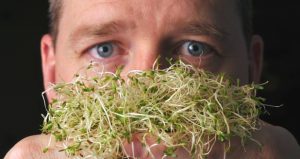 The FDA tested the sprout samples for three pathogens: Salmonella, Listeria monocytogenes and Escherichia coli (E. coli) O157:H7. Based on the test results, the FDA found the prevalence of Salmonella in the finished product sprouts to be 0.21 percent. The agency also found that the prevalence of Salmonella in seeds (2.35%) was significantly higher than in finished product (0.21%) and in spent irrigation water (0.54%). Based on the test results, the FDA found the prevalence of Listeria monocytogenes in the finished product to be 1.28 percent. There was no significant difference in the prevalence of Listeria monocytogenes based on point in the production process. None of the samples tested positive for E. coli O157:H7. The agency did not test seed for E. coli O157:H7 due to limitations associated with the test method.
The FDA tested the sprout samples for three pathogens: Salmonella, Listeria monocytogenes and Escherichia coli (E. coli) O157:H7. Based on the test results, the FDA found the prevalence of Salmonella in the finished product sprouts to be 0.21 percent. The agency also found that the prevalence of Salmonella in seeds (2.35%) was significantly higher than in finished product (0.21%) and in spent irrigation water (0.54%). Based on the test results, the FDA found the prevalence of Listeria monocytogenes in the finished product to be 1.28 percent. There was no significant difference in the prevalence of Listeria monocytogenes based on point in the production process. None of the samples tested positive for E. coli O157:H7. The agency did not test seed for E. coli O157:H7 due to limitations associated with the test method.
Among the FDA’s other findings, the agency found most of the positive samples at a small number of sprouting operations. Specifically, the FDA found violative samples at eight (8.5%) of the 94 sprouting operations visited for purposes of this assignment. The fact that the agency found multiple positive samples at some of these operations underscores the need for sprouting operations to comply with the agency’s Produce Safety Regulation (published November 2015), which seeks to prevent outbreaks of foodborne illness and improve sprout safety.
To address the positive samples, the FDA worked with the firms that owned or released the affected product to conduct voluntary recalls or to have their consignees destroy it, and then followed up with inspections. Of particular note, this sampling assignment helped detect and stop an outbreak of listeriosis while it still entailed a small number of cases, as described in the Public Health Impact section of this report (page 14). This assignment also prompted six product recalls.
 The FDA will continue to consider microbial contamination of sprouts and how best to reduce it. Such contamination remains a concern to the FDA given the aforementioned outbreak and the recalls initiated. Going forward, the FDA intends to inspect sprouting operations to ensure they are complying, as applicable, with the Produce Safety Rule, which includes new requirements for sprouts growers. The agency has no plans to conduct additional large-scale sampling of sprouts at this time but may sample the commodity in accordance with its longstanding approach to food sampling, which centers on (but is not limited to) the following criteria:
The FDA will continue to consider microbial contamination of sprouts and how best to reduce it. Such contamination remains a concern to the FDA given the aforementioned outbreak and the recalls initiated. Going forward, the FDA intends to inspect sprouting operations to ensure they are complying, as applicable, with the Produce Safety Rule, which includes new requirements for sprouts growers. The agency has no plans to conduct additional large-scale sampling of sprouts at this time but may sample the commodity in accordance with its longstanding approach to food sampling, which centers on (but is not limited to) the following criteria:
- A firm has a previous history of unmitigated microbial contamination in the environment (e.g., human illness, recalled or seized product, previous inspectional history, or environmental pathogens without proper corrective actions by the facility), or
- Inspectional observations that warrant collection of samples for microbiological analyses.
The complete report is available at https://www.fda.gov/downloads/Food/ComplianceEnforcement/Sampling/UCM566981.pdf?source=govdelivery&utm_medium=email&utm_source=govdelivery
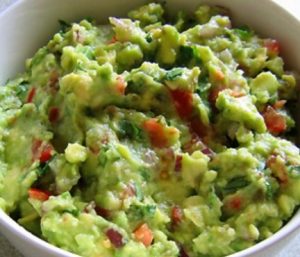 And I’m wary of fresh herbs, based on previous outbreaks.
And I’m wary of fresh herbs, based on previous outbreaks.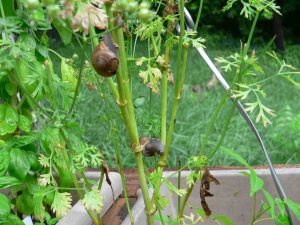 From 1996 to 2015, the FDA linked 2,699 illnesses and 84 hospitalizations to fresh herbs.
From 1996 to 2015, the FDA linked 2,699 illnesses and 84 hospitalizations to fresh herbs.


